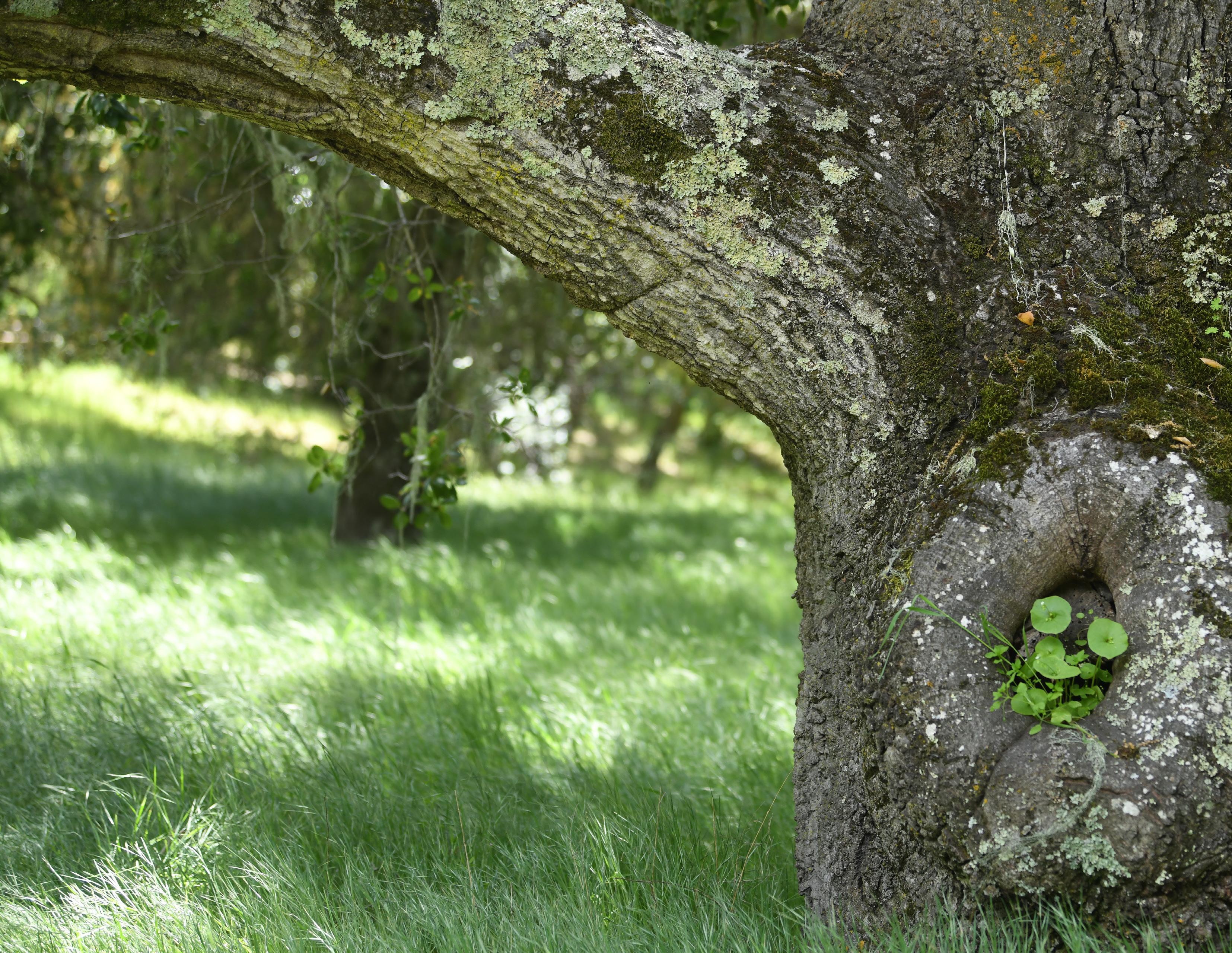

Behold the Beauty
A LETTER FROM OUR EXECUTIVE DIRECTOR
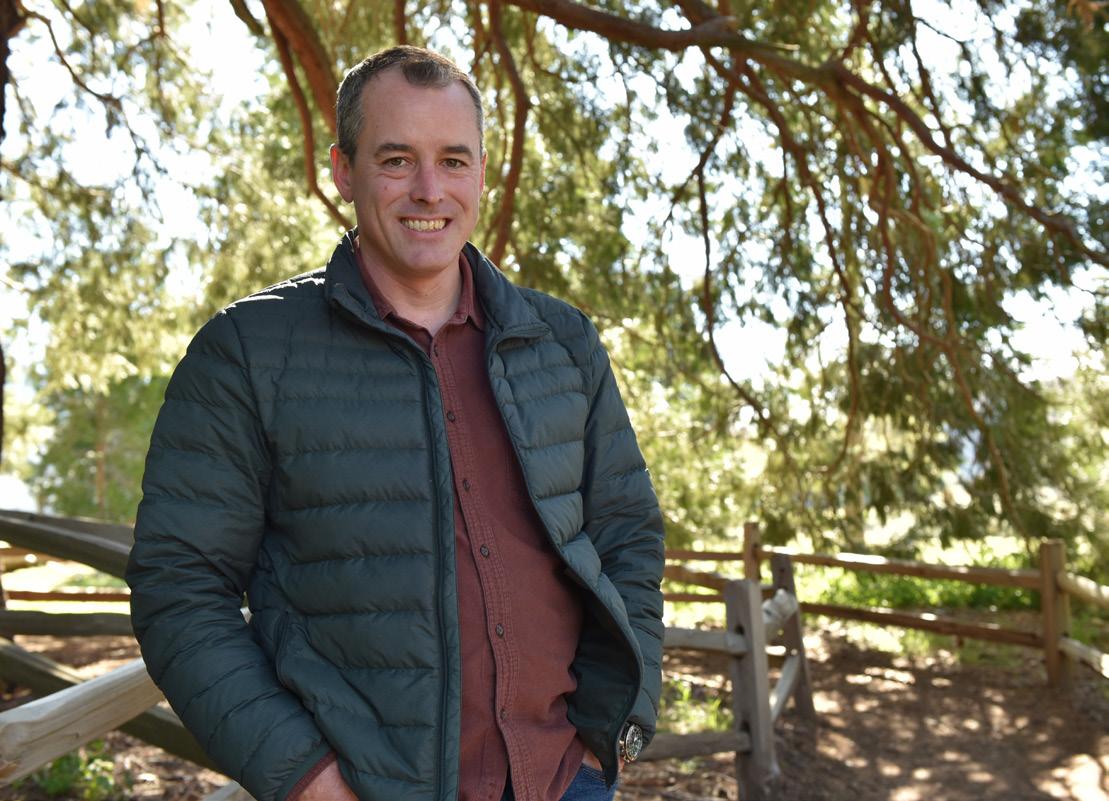
As The Wildlands Conservancy celebrates its 30th anniversary, we also mourn the recent loss of our co-founder and board president, David Myers. David was a visionary leader who approached our work with a deep sense of principle. One of his guiding beliefs was that, wherever there is great beauty and biodiversity, someone has been given the eyes to see that beauty, the intellect to understand its importance, and the passion to protect it. This is why The Wildlands Conservancy remains a committed advocate alongside local communities and our constituents, striving for the preservation of our environment.
We share deep concerns about the state of our nation’s environmental laws and the future of our public lands. Yet we remain steadfast in remembering where true hope and inspiration lie: in the collective spirit of our staff, supporters, volunteers, donors, friends, and partners. The Wildlands Conservancy thrives on this passion that invigorates us and the larger conservation movement.
While strong environmental laws, safeguards on our public lands, and forward-thinking climate policies are essential frameworks, they are no substitute for the heart and intellect that compel us to act. Our organization serves as a standard-bearer for this cause. Our shared passion is like a river — when met with obstruction, it finds another path, flowing forward with renewed force and determination. This is why every major conservation effort has begun in the private sector: individuals advocating for special places, philanthropists funding land acquisitions, and organizations pushing for policy change. Especially as federal protections face mounting threats, private land conservation plays an increasingly vital role — forming the backbone of landscape-scale efforts and anchoring regional conservation initiatives. We
believe this steady current will, over time, reshape what is possible for wild places.
Thanks to our dedicated donors, partners, and staff, we have been able to protect 2.3 million acres in our first thirty years. As we look forward to the coming decade we want to build on this work and protect critical landscapes, wildlife corridors and offer an audacious vision of what a committed group of individuals can accomplish.
Gratefully,

P.S. In honor of David, on the next pages you'll find the first of 30 short essays which were part of an unfinished book that he started writing last year — the Gifts of the Earth. Enjoy!
The Wildlands Conservancy believes the power to protect nature begins with the ability to truly see it — to pause, to wonder, and to recognize the beauty and significance of wild places. That belief inspired our Behold the Beauty Tenets — guiding principles that shape how we care for the land and connect people to nature.
These tenets reflect the legacy of our founders, who understood that when we behold beauty, we are called to protect it — not only for ourselves, but for future generations.
As we celebrate 30 years of conservation, we invite you to join us in this practice: behold the beauty, and let it move you to care.
FIRST TENET
We believe the Earth is sacred. We are committed to protecting our preserves forever with the strongest legal means possible.
SECOND TENET
We believe having to pay to visit nature is to be dispossessed of a birthright. Our preserves are open to the public for free, removing the socioeconomic barriers that promote a disconnect with nature.
BEHOLD THE BEAUTY: OUR CORE BELIEFS AND PRINCIPLES
THIRD TENET
We believe children are the future of protecting the Earth’s beauty and biodiversity. For this reason, The Wildlands Conservancy focuses on outdoor education and is California’s nonprofit leader in providing free youth programs.
FOURTH TENET
We believe in restoring nature by healing human impacts to the beauty of the land and rewilding its rich biological diversity.
FIFTH TENET
We abide by a ‘do no harm’ policy which prohibits us from selling the carbon sequestered in our trees to carbon markets that offset global polluters and from using our protected lands for mitigation banks to offset species and habitats destroyed elsewhere.
SIXTH TENET
Our preserves are limited to passive recreation, such as hiking, camping, photography, and selfexploration that fosters the contemplation of beauty and the timeless attributes of nature shared by all cultures throughout time.
SEVENTH TENET
The Earth is never saved; it is always being saved. The Wildlands Conservancy safeguards its lands and will time and again defend them from abuse and exploitation.
On the cover: Miner's lettuce finds a home in the hollow of an oak tree at Rana Creek Preserve. Photo by Elba Mora. On the back cover: While we get ready to open the Preserve, we offer guided hikes at Rana Creek. Photo by Melissa Dabulamanzi. Below: Tule elk in spring. Photo by David Clendenen.
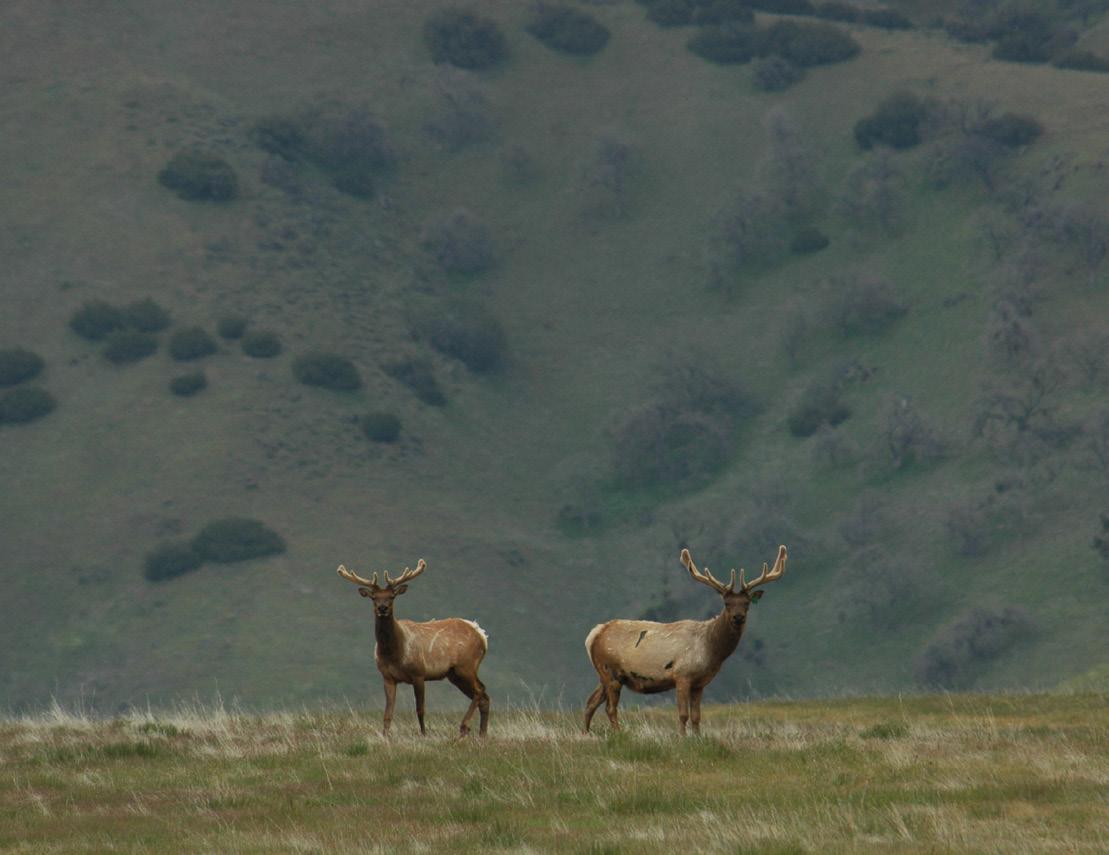
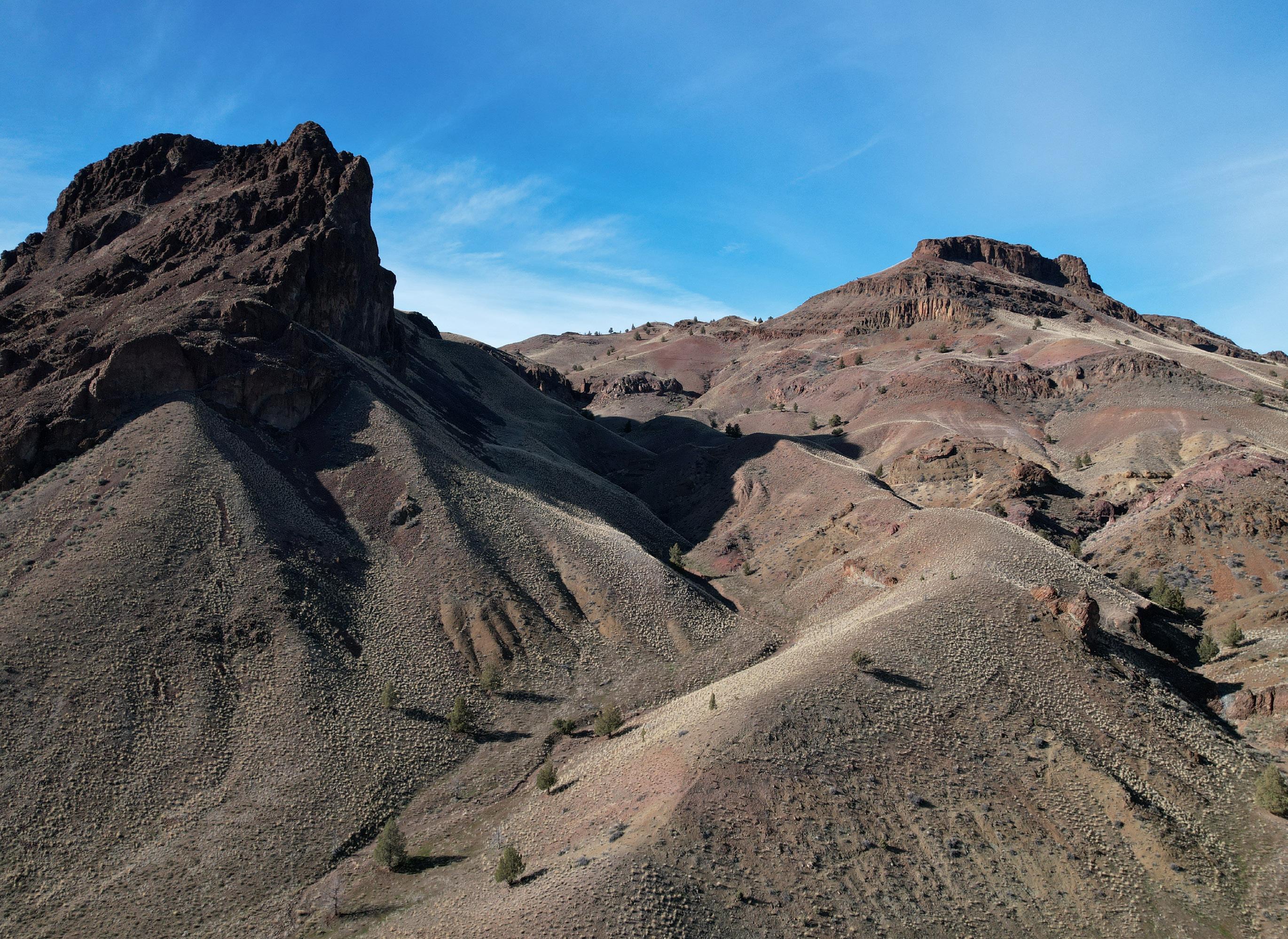
by
Photo
Jack Thompson
GIFTS OF THE EARTH
ENCHANTED ROCKS PRESERVE
JOHN DAY RIVER, CENTRAL OREGON
WITH THE GIFT OF ADVENTURE comes the challenges of hiking through intriguing topography with a genuine sense of discovery, and as you turn a blind corner at the base of giant maroon rocks that look like chessmen, another large totem of rocks jolts you to a sudden stop. In sync with your friends is a spontaneous, “Wooooow!” Enchanted Rocks Preserve and its nearby national parks and national monuments are in a region of Oregon known for adventure, where sightseers and explorers make their way through fascinating geology, uncertain of what’s ahead, sometimes looking for Oregon’s famous “thunder rocks” on public lands where collecting these wonder rocks is permitted. The Wildlands Conservancy’s new 14,000-acre Preserve, not only increased the venue of wonderful places to explore, Enchanted Rocks Preserve has opened up a new 17-mile stretch of the John Day River for the public to fish and kayak, in a region dominated by off limits private property. Enchanted Rocks Preserve was acquired in 2021, and within three years of acquisition, beavers have substantially restored the steelhead habitat along Cherry Creek after cattle grazing was largely eliminated. Wildlands is building a ranger station, research station, and staff housing. This will open the door for adventure at Enchanted Rocks Preserve! Entertain your wild side. Push outward those self-imposed boundaries that define you and explore the new dimensions of yourself that your adventure reveals. On your check-off list for your next trip, along with water, hat, map, and sunglasses, make sure you write: Adventure! Challenge! Discover! Explore!—What's most striking to your eyes, such as “The Temple” at Enchanted Rocks, or try to locate the Preserve’s fossilized redwoods.
WILD VENTURA: PROTECTING THE SESPE FOOTHILLS
Safeguarding connectivity and opening new gateways to nature
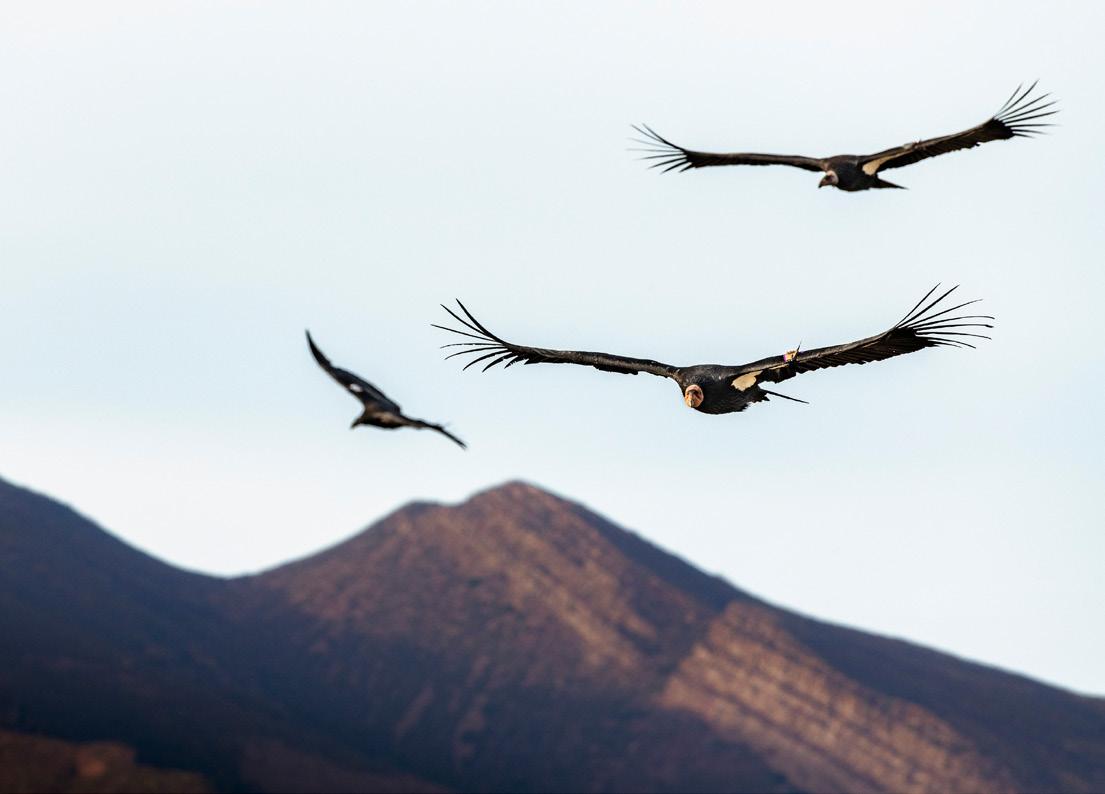
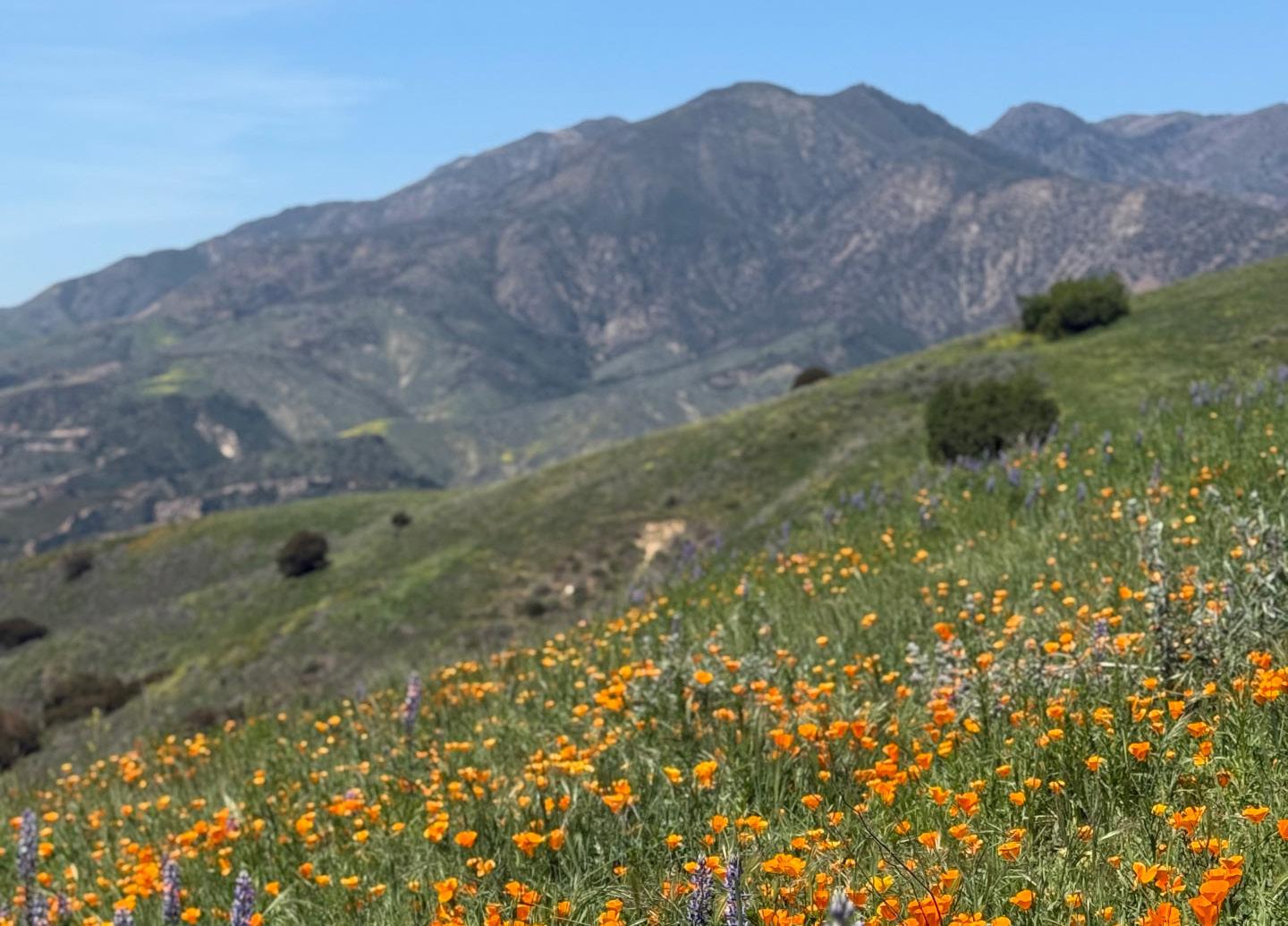
Tuckedinto the rolling foothills of Ventura County, where the rugged Topatopa Mountains rise above the Santa Clara River Valley, lies one of Southern California’s most important — but most threatened — wild landscapes. Here, the Sespe Foothills serve as a vital connection between the coast and the interior mountains — a corridor for wildlife and a refuge for rare species. For decades, this landscape has remained largely unprotected, threatened by development and habitat fragmentation.
That’s why a bold conservation effort is now taking shape — an opportunity to safeguard more than 4,200 acres and secure key linkage in this landscape-scale wildlife corridor.
This corridor is more than a scenic backdrop; it is a lifeline for wildlife. The lands provide habitat for more than 40 endangered, threatened, and sensitive species, including Southern steelhead trout, Southwestern pond turtle, arroyo toad, least Bell’s vireo, and California condor — one of the rarest birds in the world, whose recovery story is deeply rooted in the Sespe wilderness. The effort will also safeguard two of Ventura County’s most biodiverse watersheds — Pole Creek and Tom’s Canyon — which flow into Sespe
River, one of the last wild, undammed waterways in Southern California and critical habitat for steelhead recovery.
These foothills are part of a broader network of protected wildlands that includes the Santa Monica Mountains, Los Padres National Forest, and the Sespe Wilderness. Conservation scientists have long identified this area as one of the most significant missing linkages in Southern California — a place where protecting just a few thousand acres can restore connectivity across hundreds of thousands of acres of wildlands.
Just as importantly, this effort opens new doors into nature for people. More than 1.5 million children live within a 90-minute drive of the Sespe Foothills, many from communities that face barriers to outdoor access. Once protected, these lands will offer free public access and outdoor education opportunities — inviting students, families, and visitors to hike, learn, and connect with nature close to home.
As The Wildlands Conservancy celebrates its 30th anniversary, the opportunity to protect the Sespe Foothills reflects an enduring commitment to bold, landscape-scale conservation. This effort is about more than preserving acres — it’s about restoring a living corridor for wildlife and ensuring that the next generation experiences the wonder of Southern California’s wild places.
Opposite page: A view from the project area, Sespe Creek flows through the city of Fillmore and into the Santa Clara River, which winds its way through Santa Paula and Oxnard before finding the Pacific Ocean. This page: California condors seen soaring above the project area and wildflowers abound in the Sespe foothills. Photos by Devlin Gandy.
"The Sespe Foothills are one of the most important remaining linkages in Southern California. Protecting this corridor is essential to sustain wildlife movement between the coast and the inland mountains."
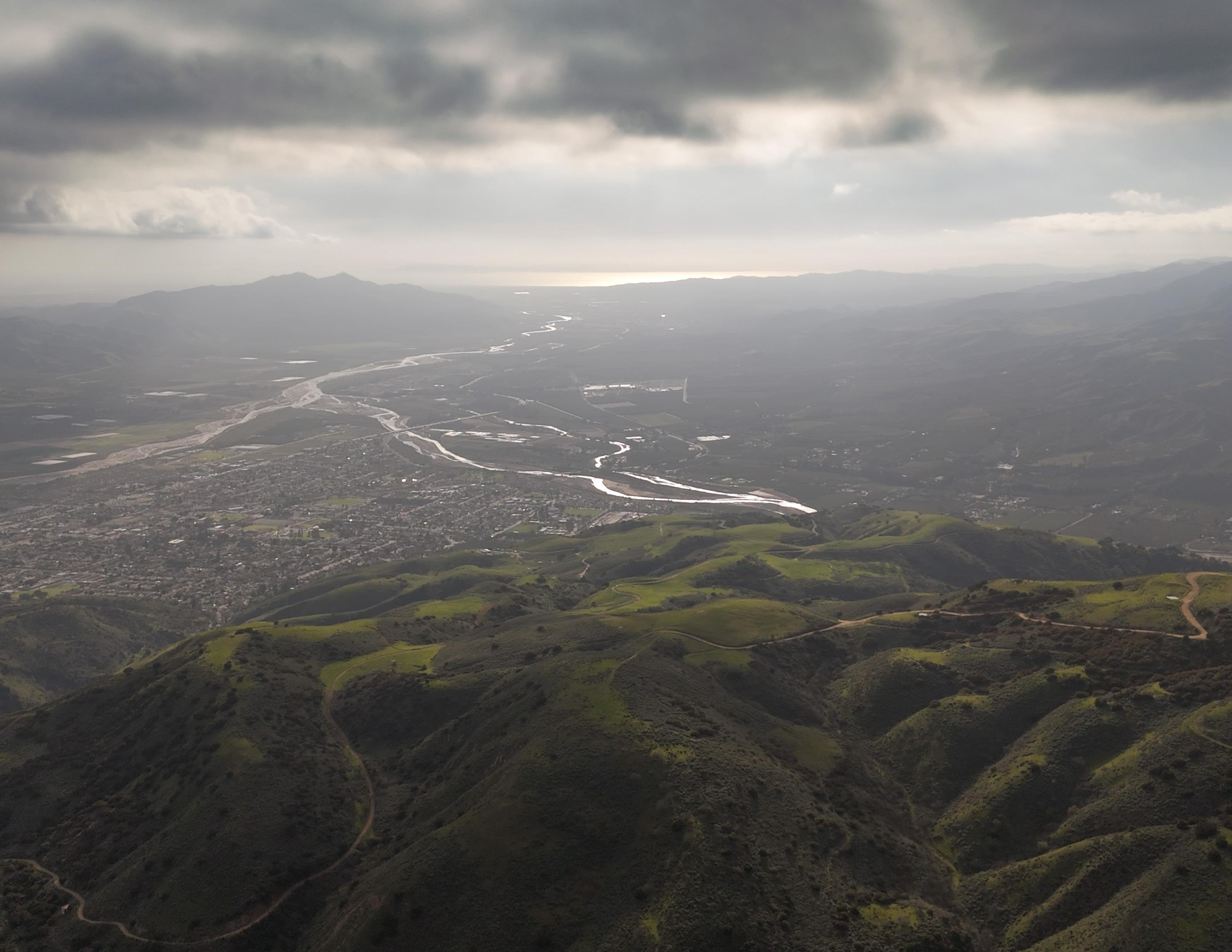
- Kristeen Penrod, Director, SC Wildlands
OPENING NEW LANDS TO THE PUBLIC, THE RIGHT WAY
that will set the stage for permitting to build trails and a group campground that will invite visitors to experience the spectacular reaches of the upper Carmel Valley. We’re collaborating with community partners to prioritize outdoor education — creating opportunities for young people to engage through place-based science, cultural learning, and immersive exploration. To deepen community connection and care for the land, we’re launching a docent program this spring focused on stewardship and visitor engagement.
The Wildlands Conservancy believes the best way to protect nature is to ensure people enjoy it — with love, thoughtfulness, and a commitment to its long-term care. That belief guides everything we do as we work to provide well-managed, free public access to the lands we’ve protected.
Today, our team is preparing to invite the public into four extraordinary places: Estero Americano Coast Preserve, Eel River Canyon Preserve, Rana Creek Preserve, and Enchanted Rocks Preserve. Together, these sites will soon offer people free access to places that have been off limits and allow them to explore rugged canyons, desert mesas, quiet estuaries, and sublime interior ecosystems.
This work involves far more than building a trailhead. It requires careful navigation of complex planning, resource studies, and permitting processes in close collaboration with Tribal communities and neighbors. We strive to frame the best possible outdoor experience and to ensure that access is safe and sustainable.
At Estero Americano Coast Preserve, we’re preparing for public hiking access this November. While this beautiful coastal property has been in our care for several years, public access has remained extremely limited. With an approved Coastal Development Permit now in place, we’re improving infrastructure and restoring habitat. We’re also cooperating closely with neighbors through a newly formed working group that’s helping shape a shared vision for managing public use to this prized part of the Sonoma Coast.
In the mountains of the North Coast, the Eel River Canyon Preserve protects a wild, rugged stretch of the Eel River. Planning and permitting work is now underway for public access, and in the meantime we are offering guided experiences to connect local communities and stakeholders with this spectacular canyon landscape. The Preserve will also anchor a future segment of the Great Redwood Trail, a multiuse trail corridor that will span hundreds of miles across Northern California.
At Rana Creek Preserve in Monterey County, we’re honored to be working alongside the Esselen Tribe of Monterey County to plan for co-stewardship of the Preserve. We’re underway on planning work
Nestled in central Oregon, Enchanted Rocks
Preserve offers awe-inspiring desert vistas, striking geologic features, and a rare sense of wildness. We're building essential infrastructure to support public access to the Wild and Scenic John Day River and the heart of the 14,000acre preserve. At the same time, we're planning ecological restoration, addressing invasive species, building local partnerships, and leading limited guided tours that preview our broader vision.
Much of this work is made possible by public agency programs, but essential pieces — especially at Estero Americano Coast and Enchanted Rocks — must be privately funded. From vault toilets and Ranger Stations to interpretive signage and habitat restoration, there are opportunities to invest in opening these preserves. With decades of experience, we’ve seen what responsible public access can do: it connects people to wild places, inspires stewardship, and helps communities and ecosystems thrive together.
Thank you for helping us do this the right way — for the people who visit today, and for generations still to come.
“The Wildlands Conservancy is setting the standard — approaching access with care, listening to the community, and ensuring the land is ready before opening it to the public. That kind of integrity is what lasting stewardship requires.”
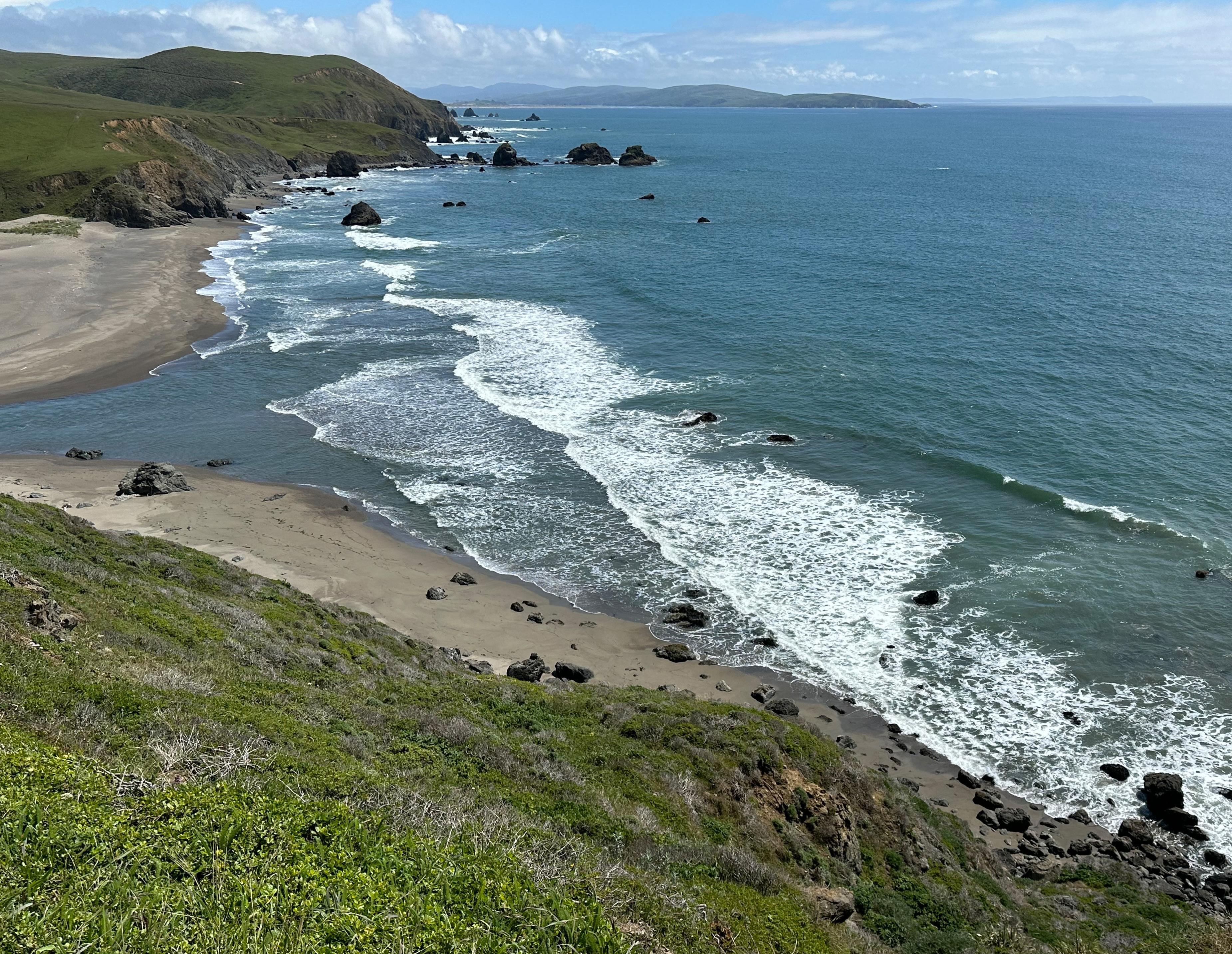
- Caryl Hart, Director, Great Redwood Trail Agency
Opposite page: The view from the coastal bluffs at Estero Americano Coast Preserve looking down the rugged California Coast past the mouth of the Estero to Tomales Point and Point Reyes. Photo by Jill Adams.
“Thanks to the generous transportation funds provided by The Wildlands Conservancy, our students were able to experience a field trip that brought their learning to life in ways that wouldn't have been possible otherwise.”
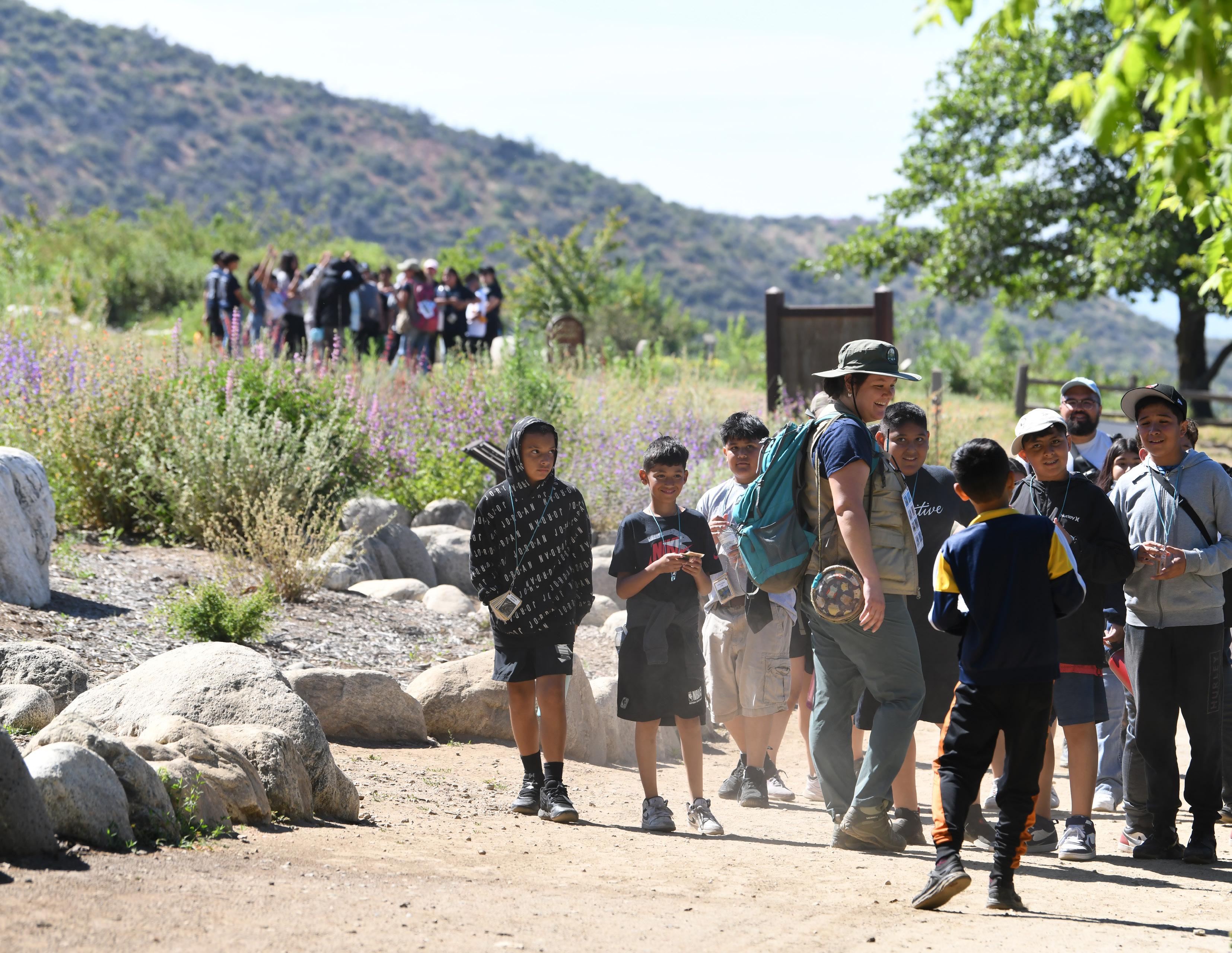
- Mr. Gamboa, 5 th Grade Teacher, Mountain Vista Elementary (Indio, CA)
BRINGING STUDENTS TO NATURE: REMOVING BARRIERS TO OUTDOOR LEARNING
This year marks The Wildlands Conservancy’s 30th anniversary — a moment that invites reflection on all we’ve accomplished together, and a renewed commitment to the work that still lies ahead. Since our founding, we’ve protected hundreds of thousands of acres of California’s most beloved landscapes and opened them to the public, free of charge. And since 1998, we’ve been welcoming students to these wild places for immersive outdoor education experiences that can shape a lifetime.
Over the years, we’ve had the privilege of watching tens of thousands of young people explore our preserves — some of them seeing a natural stream, a lizard, or a canyon for the very first time. We see their eyes light up as they hike a trail, hear the wonder in their questions, and feel their sense of pride as they learn about the ecosystems they’re part of.
Thanks to generous support from foundations and donors, our Outdoor Discovery Program has been offered completely free to schools and families for more than 25 years. Whether students learn about pollinators at Oak Glen Preserve’s native botanic garden, hike along a desert stream to understand where their water comes from at Whitewater Preserve, or study how the tule elk came back from the brink of extinction at Wind Wolves Preserve, they’re given space to wonder, to ask questions, and to connect — with nature, with each other, and with something greater than themselves.
While our programs are free, we face one persistent challenge: transportation from schools to the preserves.
We regularly hear from teachers whose students are eager to participate but can’t attend because the cost of a bus is out of reach. For schools in disadvantaged communities, transportation funding is limited or nonexistent — making it the final barrier that prevents students from accessing the benefits of outdoor learning.
To address this, The Wildlands Conservancy is leading a campaign to establish permanent transportation funds through local community foundations. These funds will help schools cover transportation costs
for outdoor education field trips — not only to our preserves, but to any natural space that offers students meaningful learning in nature.
As we celebrate 30 years of protecting California’s wildlands and nearly three decades of outdoor education, we’re also looking ahead — to the next generation of explorers, scientists, naturalists, and stewards. We believe every child deserves the chance to feel the wonder of a wild place, regardless of their school’s resources or ZIP code.
To our supporters — thank you. Your generosity has helped us create moments that children carry with them for a lifetime. And if you’d like to join us in breaking down this remaining major barrier — transportation — we invite you to be part of this legacy.
Opposite page: Students engage with each other, naturalists, and nature during an Outdoor Discovery Program field trip at Oak Glen Preserve. Photo by Elba Mora. Below: Student artwork sent to Wind Wolves Preserve as a thank you for an exciting field trip learning about nature.
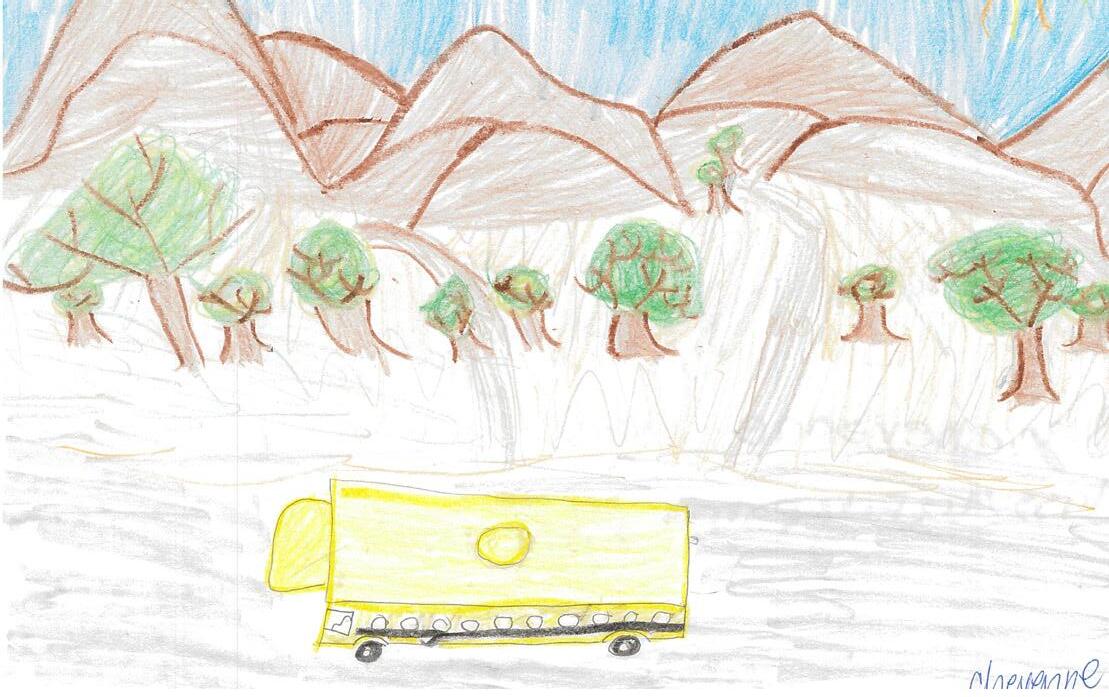















THIRTY YEARS OF PROTECTING THE AMERICAN WEST
CALIFORNIA NORTH COAST
Beaver Valley Headwaters Preserve (2021)
Seawood Cape Preserve (2019)
Eel River Estuary Preserve (2008)
Sounding Seas Dunes Reserve (2006)
The Irving and Jean Stone Sounding Seas Dunes Reserve protects 2.5 miles of oceanfront dunes on the Humboldt Coast, preserving vital habitat for the endangered snowy plover. Funded by the Stone family through the Sierra Club Foundation, it safeguards a rare stretch of coastal wildness.

















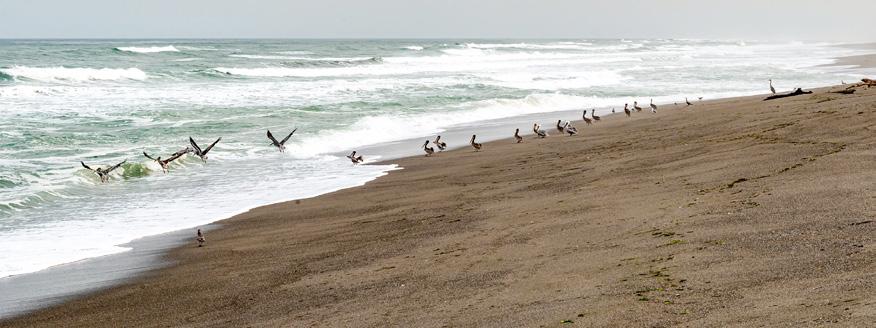
Photos by 4. Jeremy Long Photography, 6. Jack Thompson, 19. Wildlands Staff, 23. Gary Peplow, 25. Frazier Haney
EEL RIVER CANYON
Emerald Waters Reserve (2019)
Eel River Canyon Preserve (2021)
This 29,600 -acre gem was secured through a bold, multi-phase effort with public and private support. A keystone of our Eel River Emerald Necklace project, it will also anchor the 302-mile Great Redwood Trail in this stunning region.
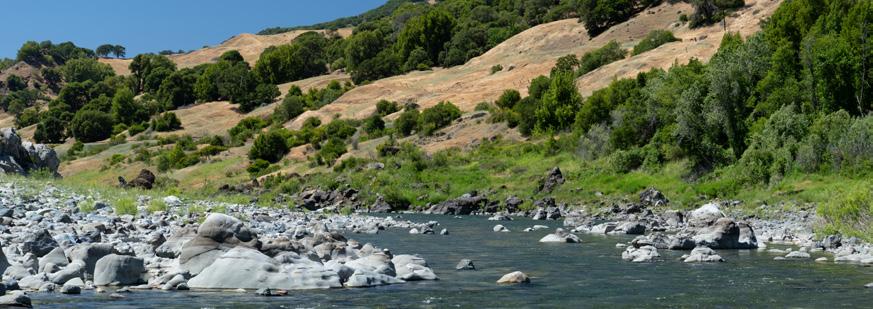
Spyrock Reserve (2005)
SONOMA COAST
Jenner Headlands Preserve (2013)
Protected in 2009 through a landmark effort led by Sonoma Land Trust and Sonoma County Ag + Open Space, Jenner Headlands Preserve is now managed by Wildlands. When funding was at risk, Wildlands stepped in to help save this iconic landscape. Today, the Preserve offers free daily access and is a model for redwood forest and coastal prairie restoration.
Estero Americano Coast Preserve (2015)
EASTERN SIERRA NEVADA
West Walker River Preserve (2019)
Two Rivers Preserve (2015)
This 2,483-acre preserve at the confluence of the Little Walker and West Walker Rivers features alpine meadows, rivers, and forests that support sage grouse, bald eagles, and more. Open daily, it offers hiking, fishing, and access to the HumboldtToiyabe National Forest via the Kirman Lake Trail.
Bodie Hills Preserve (2020)
CENTRAL COAST RANGES
Rana Creek Preserve (2023)
Wind Wolves Preserve (1996)
Spanning 93,000 acres, Wind Wolves Preserve protects a key wildlife corridor in Southern California. From the start, Wildlands reintroduced tule elk and launched free outdoor education programs. The Preserve continues to thrive thanks to volunteer-powered habitat restoration.
SAN BERNARDINO MOUNTAINS
Bluff Lake Reserve (2000)
Bearpaw Reserve (2002)
Galena Peak Wilderness Reserve (1996)
Oak Glen Preserve (1996)
In 2014, we celebrated the 100,000th student to enjoy a free, hands-on, naturalist-led field trip at Oak Glen Preserve. That same year we opened the Southern California Montane Botanic Garden and Children’s Outdoor Discovery Center, a vibrant native garden offering experiences that spark connection with the natural world.
CALIFORNIA DESERTS
Pioneertown Mountains Preserve (1995)
Our first conservation acquisition — 25,500 acres of rugged desert mountains — established the largest privately owned wilderness, protecting a stunning landscape home to numerous endemic and threatened species.
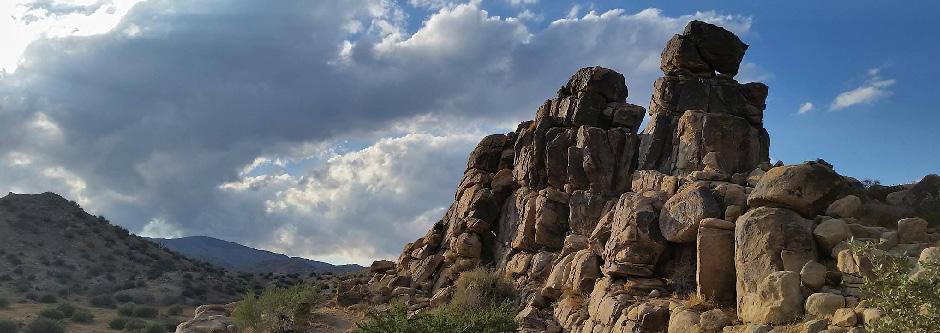
Whitewater Preserve (2006)
Mission Creek Preserve (1995)
SOUTH COAST
Mariposa Reserve (2005)
Santa Margarita River Trail Preserve (2018)
This 1,384-acre preserve, which includes five miles of Southern California's Santa Margarita River, was acquired with public funding after we lobbied for a callout for the acquisition in Prop 68.
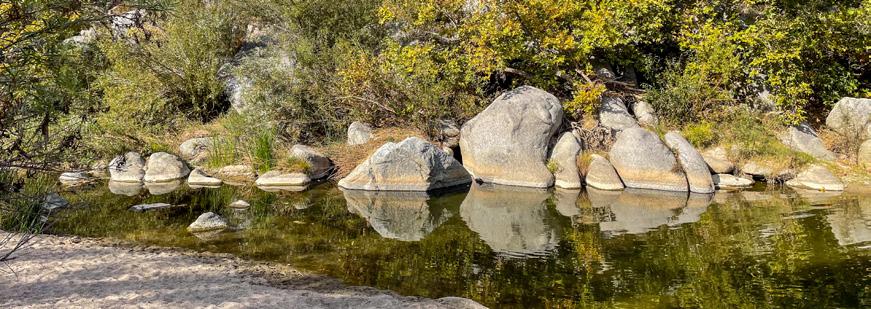
OREGON
JOHN DAY RIVER
Enchanted Rocks Preserve (2021)
Marking our first expansion beyond California, this 14,000 -acre Central Oregon preserve protects towering rock formations and two miles of Wild and Scenic John Day River — habitat for bighorn sheep, golden eagles, beavers, and native fish.
UTAH
FOUR CORNERS
Speaking Springs Preserve (2023)
This 415-acre Preserve controls access to thousands of acres of the surrounding public lands inside Bears Ears National Monument and is critically important to the management of those lands, including access for cultural site stewardship and ceremony, restoration, education, and hiking.
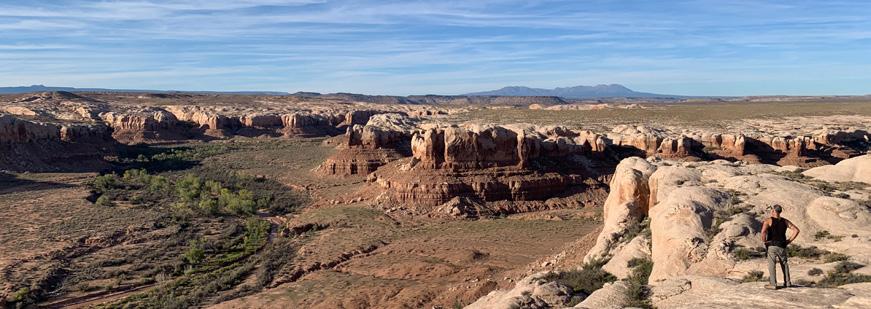
A FISCAL YEAR IN REVIEW
Year Ending June 30, 2024
The Wildlands Conservancy’s financial results for the fiscal year ending June 30, 2024 reflect a landmark year for land conservation. Total revenue was $65.9 million, including more than $40 million in grant funding — of which $38.075 million was restricted for land acquisition. These funds, primarily from public sources, supported the acquisition of more than 25,800 acres, described on the next page. This funding was not available for operational use. Non-cash contributions also increased significantly, including a generous excess value donation from the seller of Rana Creek Ranch — allowing us to acquire the property below market value.
Together, these extraordinary transactions increased our total assets by 34%, from nearly $181 million to more than $242 million, while enabling the permanent protection of tens of thousands of acres of vital habitat and the expansion of free public access and outdoor education opportunities.
To our public agency partners, foundation supporters, individual donors, and nonprofit collaborators — thank you. Your support made this historic year possible.
With gratitude,

Jennifer Francis Chief Financial Officer
Program Expense Ratio
Year Ending June 30, 2024
Program
Fundraising Management & Administration
CONSERVATION LAND ACQUISITION
During the fiscal year, The Wildlands Conservancy conserved thousands of acres across the West, expanding our preserve system and protecting critical habitat. We established Rana Creek Preserve, our first preserve on California’s Central Coast, and Speaking Springs Preserve, our first in Utah. We also completed the final phase of the Eel River Canyon Preserve acquisition, safeguarding a vast stretch of Northern California’s wild river corridor. In the Eastern Sierra, we expanded Two Rivers Preserve by 2,400 acres, protecting habitat connectivity for wildlife and climate resilience.
Conservation Land Acquisition, Outdoor Education, Preserve Management & Stewardship
$9,972,377 5% 9% 86%
$1,107,121
LEADING OUTDOOR EDUCATION
Since 1995, The Wildlands Conservancy has provided free outdoor education to more than 1.3 million underserved youth across Southern California. Today, more than 60,000 children and families each year participate in our programs — from guided field trips to self-paced learning on trails with interpretive signage. Each experience invites curiosity, deepens understanding, and fosters a lasting connection to the natural world.
PRESERVE MANAGEMENT & STEWARDSHIP
$562,636
The Wildlands Conservancy manages the fastest growing nonprofit nature preserve system in the West, with 25 preserves spanning nearly 210,000 acres. More than 1.5 million people visit these wild places each year — open to the public free of charge for hiking, camping, birding, and more. Our rangers and stewards restore native habitats, rewild species, and maintain trails and campsites, working alongside hundreds of volunteers who contribute thousands of hours annually. Together, we ensure these cherished landscapes remain protected and welcoming for all.
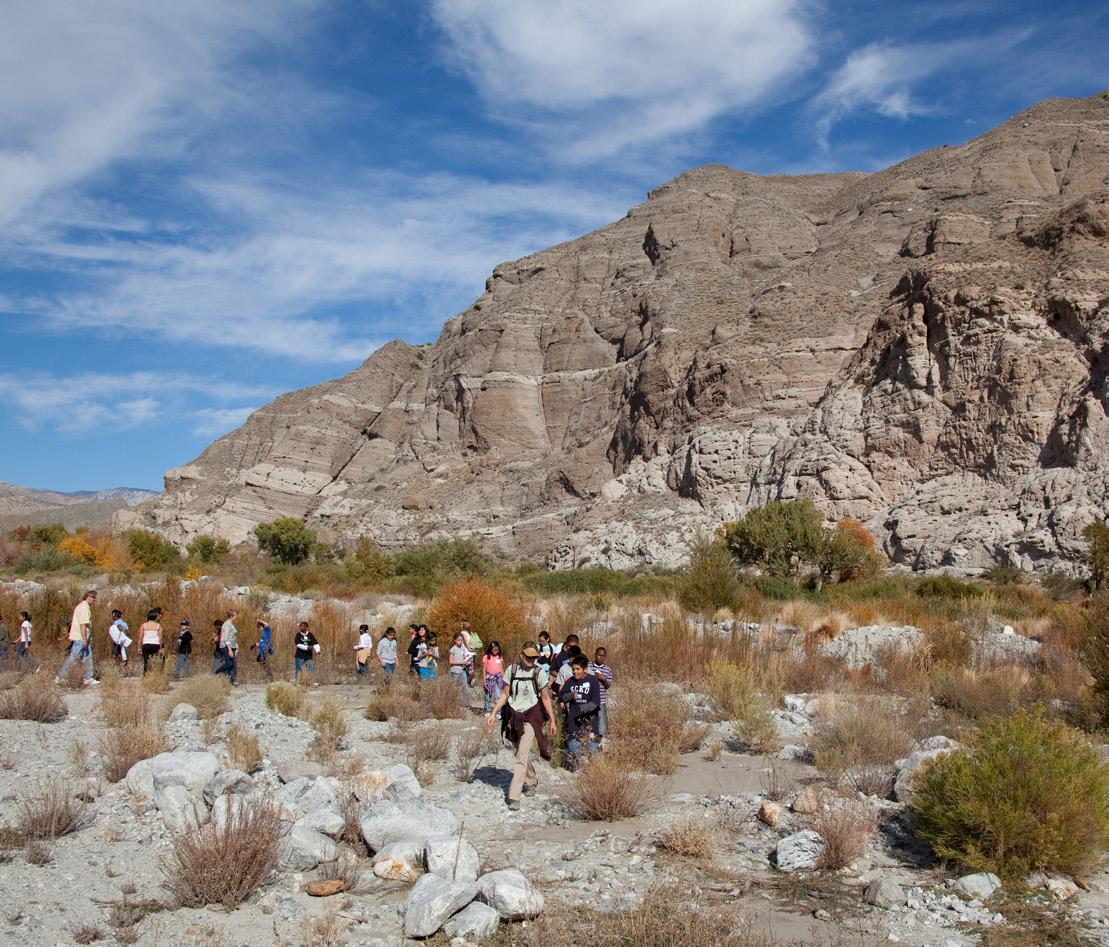
Photo by Jack Thompson
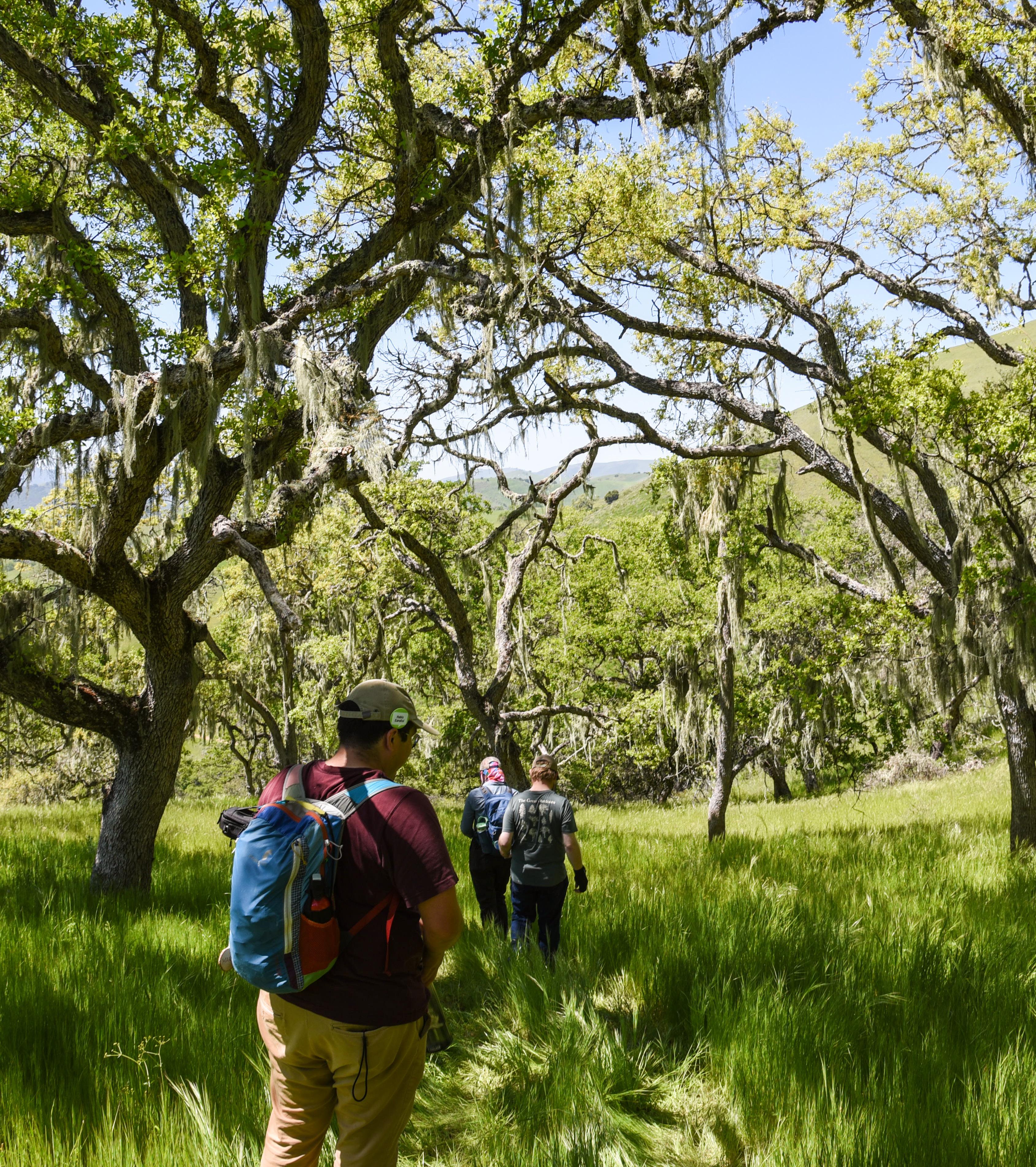
David
(deceased)
